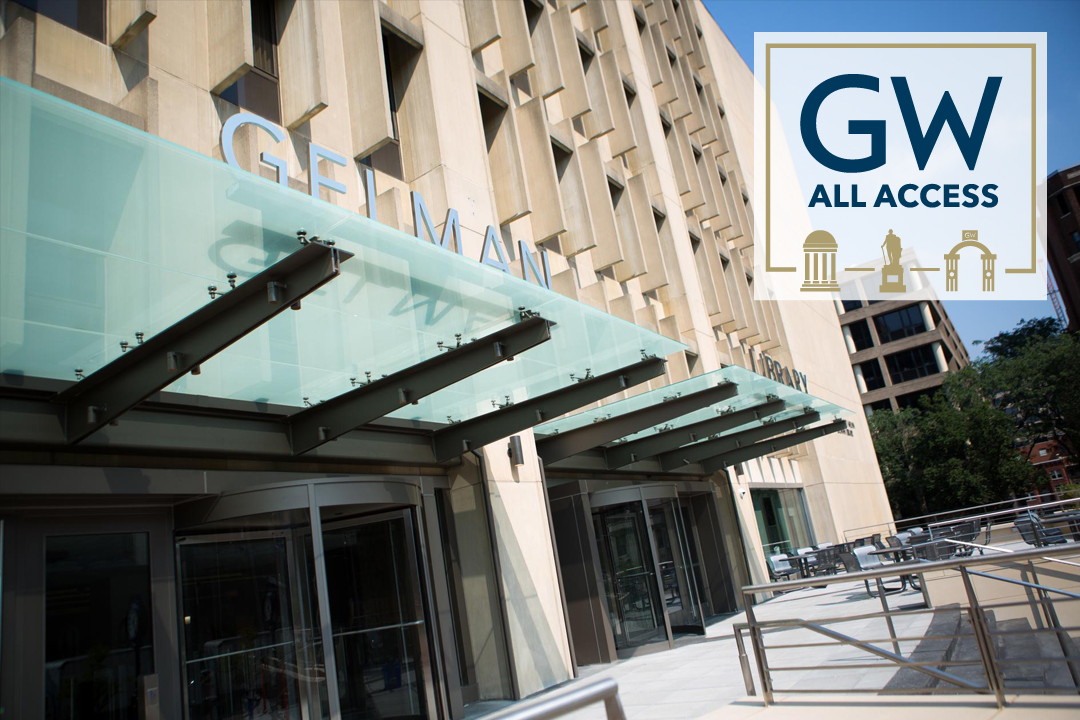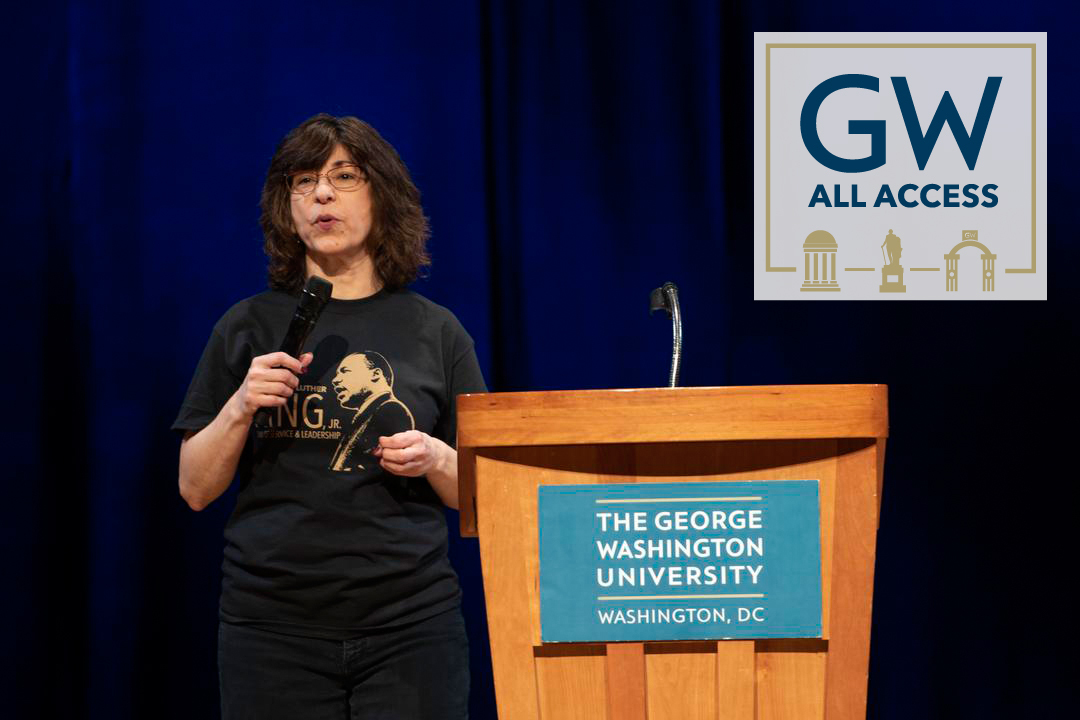Maida Withers has always been engaged with technology as a tool of artistic expression. This semester, the artistic pioneer and professor of dance at George Washington University embraced new forms of technology to bring her students together and ensure they could continue to evolve as artists, no matter where they are or what resources they have access to.
“We’ve always prided ourselves at GW that we were one of the most future-oriented programs in dance in America—forward-thinking and aware of industry trends,” Ms. Withers said. “We have always incorporated experimental and diverse work, so leaning into digital processes is an organic shift to expand our curriculum and feature digital ways of working.”
That means learning to push platforms like Zoom and WebEx outside of the context of corporate conferencing, which generally only requires a view of the face and motionless upper body.
“A dancer has feet, and they’re very important,” Ms. Withers said. “The students know how to use their phones expertly from social interactions, so this is a great opportunity to expand that natural generational skill set into using cameras as instruments for art.”
Accordingly, dancers auditioned for this semester’s dance concert on Zoom and Ms. Withers is working with her choreography students to complete video creation assignments, a medium in which she has extensive experience.
“What is so important about this is the opportunity to revise our curriculum, because my view is that this is not a moment in time; this is a transition,” she said. “It’s not that all courses are going to always be online, but the influence of online platforms, the interactivity—that’s going to be part of what happens next.”
Ms. Withers is just one of many GW instructors who have worked with GW Libraries and Academic Innovation before and during the virtual learning period to expand their technological capabilities.
“One of our goals last year was digital fluency for all, elevating the digital skills of everyone at the university,” said Geneva Henry, dean of libraries and academic innovation. “We were already preparing to move the campus in that direction before COVID-19 hit.”
In fact, instructional continuity was another of LAI’s goals—helping instructors to think creatively about the way they use multimedia and digital technology to minimize disruption if in-person classes were interrupted for any reason.
Admittedly, Ms. Henry said, the scale of interruption they’d envisioned was a little smaller than a global pandemic.
“We were thinking of a blizzard, but we got COVID-19,” she said. “Fortunately, we’d done a lot of outreach with faculty, doing this blitz ahead of time to say, ‘Here’s how you can still teach.’ So they knew our resources were available.”
And there are a lot of resources. For students, Academic Commons, LAI’s “one-stop shop” for academic resources and services across the university, created new videos, workshops, and asynchronous resources to help students succeed with virtual learning.
Among the newest services to GW, and one of those most heavily used by LAI collaborators, is GoBoard, a video conferencing and interactive canvas service that allows instructors, tutors or students to write on a virtual whiteboard or mark up materials in real time.
“It allows you to take a picture of something in your book and do the same thing you can do with a written document—you can cross things out, draw arrows, write in the margins, any of the visual things we’ve really missed in this environment,” said Associate Dean of Student Success and Communications Robin Delaloye. “It’s perfect for faculty members who work with a lot of equations or formulas or graphs because that kind of instruction can’t be static. They need to talk students through their process.”
Another new resource is the CREATE Digital Studio, a space in Gelman Library where instructional technologists Joshua Gleason and Ben Horn help students, faculty and staff learn to use multimedia to expand the digital storytelling potential of their academic projects. Though GW’s on-campus population is drastically reduced this semester, LAI still offers virtual consults and workshops on free software as well as access to Adobe Creative Cloud, which all GW students, faculty and staff can download.
“We were already developing the studio before the pandemic, but it was brought into new importance because of course so many people wanted to have stronger video skills,” Ms. Delaloye said.
For Ms. Henry, Ms. Delaloye and LAI staff, the GW community’s increasingly strong digital capacity is a silver lining in a difficult time.
“A lot of faculty who before this were really hesitant about or resistant to online teaching have been shocked: ‘Oh, I can do this!’” Ms. Henry said. “I think it’s opened up some faculty perspectives and now the creative juices are flowing. And once we get back to campus, there will be an understanding that teaching doesn’t have to be confined to the box of the classroom. It just has opened up a lot of doors.”
For Ms. Withers and her dance students, it means continuing to push boundaries—just as she’s always done.
“A colleague said to me ‘You were born for this moment, Maida,’ and I do feel there’s comfort and excitement for me in using new technologies,” she said. “You don’t have to know everything to proceed. You just learn. The arts break new ground. The arts have always broken molds and brought a voice to the whispers of change.”



